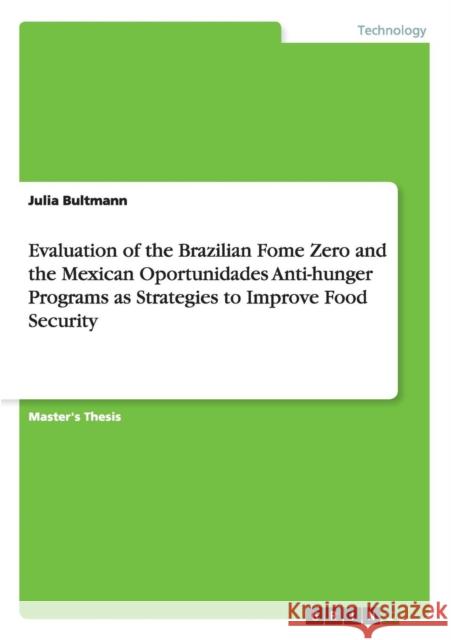Evaluation of the Brazilian Fome Zero and the Mexican Oportunidades Anti-hunger Programs as Strategies to Improve Food Security » książka
Evaluation of the Brazilian Fome Zero and the Mexican Oportunidades Anti-hunger Programs as Strategies to Improve Food Security
ISBN-13: 9783656940760 / Angielski / Miękka / 2015 / 148 str.
Evaluation of the Brazilian Fome Zero and the Mexican Oportunidades Anti-hunger Programs as Strategies to Improve Food Security
ISBN-13: 9783656940760 / Angielski / Miękka / 2015 / 148 str.
(netto: 360,15 VAT: 5%)
Najniższa cena z 30 dni: 364,11 zł
ok. 13-18 dni roboczych.
Darmowa dostawa!
Master's Thesis from the year 2013 in the subject Environmental Sciences, grade: 1,3, Cologne University of Applied Sciences (The present paper evaluates the two approaches Fome Zero and Oportunidades of Brazil and Mexico as strategies to improve food security. The analysis shows that various significant differences but also similarities exist in the structures of both countries), language: English, abstract: The present paper evaluates the two approaches Fome Zero and Oportunidades of Brazil and Mexico as strategies to improve food security. The analysis shows that various significant differences but also similarities exist in the structures of both countries. The Brazilian strategy, which was established in 2003, achieved exemplary good results in the fight against hunger and poverty because the food security strategy combines structural with emergency policies and includes various approaches in order to strengthen rural development. The extensive inclusion of family farmers for the supply of the national food demand keeps Brazil relatively independent from food imports and prevents the direct transmission of extreme international price fluctuations of essential food items to low-income households. The good result in poverty alleviation in Brazil caused a significant strengthening of the people's purchasing power and thus provoked an economic growth in recent years which exceeds the capacities of the prevailing infrastructure and leads to a high demand of natural resources. This current situation provokes an unsustainable development. Mexico's joining of the North American Free Trade Agreement (NAFTA) in 1994 confronted millions of farmers with cheap, subsidized corn which is imported from the United States. This situation weakened the agricultural food production in Mexico and caused a dependency on international food products. Extreme price shocks provoked a considerable increase in national poverty rates in recent years, especially among rural farmers. The











